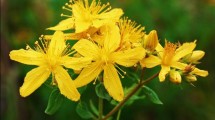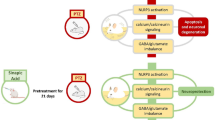Abstract
There is evidence to support that an impaired energy metabolism and the excessive generation of reactive oxygen species (ROS) contribute to brain injury in neurodegenerative disorders such as Parkinson’s disease (PD), whereas diets enriched in foods with an antioxidant action may modulate its progression. Several studies have proved that the antioxidant components produced by Spirulina, a microscopic blue-green alga, might prevent cell death by decreasing free radicals, inhibiting lipoperoxidation and upregulating the antioxidant enzyme systems. In our study, we investigated the protective effect of the Spirulina maxima (S. maxima) against the 6-OHDA-caused toxicity in the rat striatum. The S. maxima (700 mg/kg/day, vo) was administered for 40 days before and 20 days after a single injection of 6-OHDA (16 μg/2 μL) into the dorsal striatum. At 20-day postsurgery, the brain was removed and the striatum was obtained to evaluate the indicators of toxicity, such as nitric oxide levels, ROS formation, lipoperoxidation, and mitochondrial activity. These variables were found significantly stimulated in 6-OHDA-treated rats and were accompanied by declines in dopamine levels and motor activity. In contrast, the animals that received the chronic treatment with S. maxima had a restored locomotor activity, which is associated with the decreased levels of nitric oxide, ROS, and lipoperoxidation in the striatum, although mitochondrial functions and dopamine levels remained preserved. These findings suggest that supplementation with antioxidant phytochemicals (such as contained in S. maxima) represents an effective neuroprotective strategy against 6-OHDA-caused neurotoxicity vía free radical production to preserve striatal dopaminergic neurotransmission in vivo.






Similar content being viewed by others
References
Beckman JS (1996) Oxidative damage and tyrosine nitration from peroxynitrite. Chem Res Toxicol 9(5):836–844
Belay A (2002) The potential application of Spirulina (Arthrospira) as a nutritional and therapeutic supplement in health management. J Am Nutr Assoc 5:27–48
Blandini F, Armentero MT, Martignoni E (2008) The 6-hydroxydopamine model: news from the past. Parkinsonism Relat Disord 14:S124–S129
Blum D, Torch S, Lambeng N, Nissou MF, Benabid AL, Sadoul R, Verna JM (2001) Molecular pathways involved in the neurotoxicity of 6-OHDA, dopamine and MPTP: contribution to the apoptotic theory in Parkinson’s disease. Prog Neurobiol 65:135–172
Chamorro G, Salazar M, Araújo KG, dos Santon CP, Ceballos G, Castillo LF (2002) Update on the pharmacology of Spirulina (Arthrospira), an unconventional food. Arch Latinoam Nutr 52:232–240
Chamorro G, Perez-Albatier M, Serrano-Garcia N, Mares-Samano JJ, Rojas P (2006) Spirulina maxima pretreatment partially protects against 1-methyl-4-phenyl-1,2,3,6-tetrahydropyridine neurotoxicity. Nutr Neurosc 9:207–212
Chopra K, Bishnoi M (2008) Antioxidant profile of Spirulina: a blue-green microalga. In: Spirulina in human nutrition and health. CRC press, Boca Raton, pp 101–118
Cools AR, Brachten R, Heeren D, Willemen A, Ellenbroek B (1990) Search after neurobiological profile of individual-specific features of Wistar rats. Brain Res Bull 24:49–69
Costa G, Abin-Carriquiry JA, Dajas F (2001) Nicotine prevents striatal dopamine loss produced by 6-hydroxydopamine lesion in the substantia nigra. Brain Res 888(2):336–342
Dauer W, Przedborski S (2009) Parkinson’s disease: mechanisms and models. Neuron 39:889–909
Gandhi S, Wood NW (2005) Molecular pathogenesis of Parkinson’s disease. Hum Mol Genet 14:2749–2755
Garcia E, Rios C, Sotelo J (1992) Ventricular injection of nerve growth factor increases dopamine content in the striata of MPTP-treated mice. Neurochem Res 17(10):972–982
Garcia E, Limon D, Perez-de la Cruz V, Giordano M, Diaz-Muños M, Maldonado PD, Herrera-Mundo MN, Pedraza-Chaverrí J, Santamaría A (2008) Lipid peroxidation, mitocondrial dysfunction and neurochemical and behavioural déficits in different neurotoxic models: protective role of S-allylcysteine. Free Radic Res 42(10):892–902
Green LC, Wagner DA, Glogowski J, Skipper PL, Wishnok JS, Tannenbaum SR (1982) Analysis of nitrate, nitrite and (15) nitrate in biological fluids. Anal Biochem 126:131–138
Greenamyre JT, Hastings TG (2004) Biomedicine. Parkinson’s divergent causes, convergent mechanisms. Science 304:1120–1122
Grünblatt E, Mandel S, Youdim MB (2000) MPTP and 6-hydroxydopamine-induced neurodegeneration as models for Parkinson’s disease: neuroprotective strategies. J Neurol 247(2):II95–II102
Haleagrahara N, Siew CJ, Mitra NK, Kumari M (2011) Neuroprotective effect of bioflavonoid quercetin in 6-hydroxydopamine-induced oxidative stress biomarkers in the rat striatum. Neurosci Lett 500:139–143
Huang Z, Guo BJ, Wong RNS, Jiang Y (2007) Characterization and antioxidant activity of selenium-containing phycocyanin isolated from Spirulina platensis. Food Chem 100:1137–1143
Hudson JL, van Horne CG, Strômberg I, Brock S, Clayton J, Masserano J, Hoffer BJ, Gerhardt GA (1993) Correlation of apomorphine- and amphetamine-induced turning with nigrostriatal dopamine content in unilateral 6-hydroxydopamine lesioned rats. Brain Res 626(1–2):167–174
Karadeniz A, Yildirim A, Simsek N, Kalkan Y, Celebi F (2008) Spirulina platensis protects against gentamicin-induced nephrotoxicity in rats. Phytother Res 22:1506–1510
Karadeniz A, Cemek M, Simsek N (2009) The effects of Panax ginseng and Spirulina platensis on hepatotoxicity induced by cadmium in rats. Ecotoxicol Environ Saf 72:231–235
Kulshreshtha A, Zacharia AJ, Jarouliya U, Bhadauriya P, Prasad GB, Bisen PS (2008) Spirulina in health care management. Curr Pharm Biotechnol 9:400–405
Lang AE, Lozano AM (1998a) Parkinson’s disease. First of two parts. N Engl J Med 339:1044–1053
Lang AE, Lozano AM (1998b) Parkinson’s disease. Second of two parts. N Engl J Med 339:1130–1143
Liberatore GT, Finkelstein DI, Wong JY, Horne MK, Porrit MJ, Donnan GA, Howells DW (1999) Sprouting of dopaminergic axons after striatal injury: confirmation by markers not dependent on dopamine metabolism. Exp Neurol 159(2):565–573
Limon ID, Mendieta L, Díaz A, Chamorro G, Espinosa B, Zenteno E, Guevara J (2009) Neuroprotective effect of alpha-asarone on spatial memory and nitric oxide levels in rats injected with amyloid-beta ((25–35)). Neurosci Lett 453:98–103
Lowry OH, Rosebrough NJ, Farr AL, Randal RJ (1951) Protein measurement with the Folin phenol reagent. J Biol Chem 193:265–275
Middelton FA, Strick PL (2000) Basal ganglia and cerebellar loops motor and cognitive circuit. Brain Res 31:236–250
Miller RL, James-Kracke M, Sun GY, Sun AY (2009) Oxidative and inflammatory pathways in Parkinson’s disease. Neurochem Res 34:55–65
Mosmann T (1983) Rapid colorimetric assay for cellular growth and survival: application to proliferation and cytotoxicity assays. J Immunol Methods 65:55–63
Ottoni EB (2000) EthoLog 2.2: a tool for the transcription and timing of behavior observation sessions. Behav Res Methods Instrum Comput 32:446–449
Paxinos G, Watson C (1998) The rat brain in stereotaxic coordinates. Academic Press, USA
Ponce-Canchihuaman JC, Perez-Mendez O, Hernandez-Munoz R, Torres-Duran PV, Juarez-Oropeza MA (2010) Protective effects of Spirulina maxima on hyperlipidaemia and oxidative-stress induced by lead acetate in the liver and kidney. Lipids Health Dis 9:35
Reddy CM, Bhat VB, Kiranmai G, Reddy MN, Reddanna P, Madyastha KM (2000) Selective inhibition of cyclooxygenase-2 by C-phycocyanin, a biliprotein from Spirulina platensis. Biochem Biophys Res Commun 277:599–603
Rimbau V, Camins A, Romav C, Gonzalez R, Pallas M (1999) Protective effect of c-phycocyanin against kainic acid induced neural damage in rat hippocampus. Neurosci Lett 276:75–78
Robinson TE, Mocsary Z, Camp DM, Whishaw IQ (1994) Time course of recovery of extracellular dopamine following partial damage to the nigrostriatal dopamine system. J Neurosci 14(5 Pt 1):2687–2696
Romay Ch, Gonzalez R, Ledon N, Remirez D, Rimbau V (2003) C-Phycocyanin: a biliprotein with antioxidant, anti-inflammatory and neuroprotective effects. Curr Protein Pept Sci 4:207–216
Santamaría A, Flores-Escartín A, Martínez JC, Osorio L, Galván-Arzate S, Pedraza-Chaverrí J, Maldonado PD, Medina-Campos ON, Jiménez-Capdeville ME, Manjarrez J, Ríos C (2003) Copper blocks quinolinic acid neurotoxicity in rats: contribution of antioxidant systems. Free Radic Biol Med 35:418–427
Schallert T, Fleming SM, Leasure JL, Tillerson JL, Bland ST (2000) CNS plasticity and assessment of forelimb sensorimotor outcome in unilateral rat models of stroke, cortical ablation, parkinsonism and spinal cord injury. Neuropharmacology 39:777–787
Simola N, Morelli M, Carta AR (2007) The 6-hydroxydopamine model of Parkinson’s disease. Neurotox Res 11:151–167
Strömberg I, Gemma C, Vila J, Bickford PC (2005) Blueberry- and Spirulina-enriched diets enhance striatal dopamine recovery and induce a rapid, transient microglia activation after injury of the rat nigrostriatal dopamine system. Exp Neurol 196:298–307
Thaakur SR, Jyothi B (2007) Effect of Spirulina maxima on the haloperidol induced tardive dyskinesia and oxidative stress in rats. J Neural Transm 114:1217–1225
Tobón-Velasco JC, Carmona-Aparicio L, Ali SF, Santamaría A (2010) Biomarkers of cell damage induced by oxidative stress in Parkinson’s disease and related models. Cent Nerv Syst Agents Med Chem 10:278–286
Ungerstedt U, Arbuthnott GW (1970) Quantitative recording of rotational behavior in rats after 6-hydroxy-dopamine lesions of the nigrostriatal dopamine system. Brain Res 24:485–493
Zhang H, Chen T, Jiang J, Wong YS, Yang F, Zheng W (2011) Selenium-containing allophycocyanin purified from selenium-enriched Spirulina platensis attenuates AAPH-induced oxidative stress in human erythrocytes through inhibition of ROS generation. J Agric Food Chem 59:8683–8690
Acknowledgments
This work was partially supported by (LNAB1-08-11), VIEP-BUAP NAT 2010-2012 and CONACYT (169023-2011) given to D.L. The authors of this article declare no conflict of interest. Thanks to Dr. Ellis Glazier for editing this English-language text.
Author information
Authors and Affiliations
Corresponding author
Additional information
J.C. Tobón-Velasco and V. Palafox-Sanchez contributed equally to this study and both are considered like first author.
Rights and permissions
About this article
Cite this article
Tobón-Velasco, J.C., Palafox-Sánchez, V., Mendieta, L. et al. Antioxidant effect of Spirulina (Arthrospira) maxima in a neurotoxic model caused by 6-OHDA in the rat striatum. J Neural Transm 120, 1179–1189 (2013). https://doi.org/10.1007/s00702-013-0976-2
Received:
Accepted:
Published:
Issue Date:
DOI: https://doi.org/10.1007/s00702-013-0976-2




